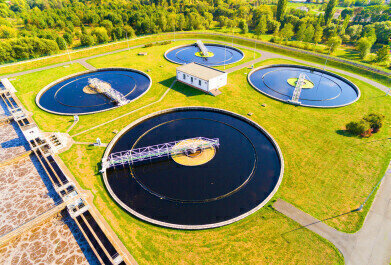
# Drinking Water Inspectorate Strengthens PFAS Standards in England and Wales
The Drinking Water Inspectorate (DWI), the autonomous overseer of water quality in England and Wales, is set to introduce tougher limits on per- and polyfluoroalkyl substances (PFAS) contamination in drinking water. These forthcoming regulations will enforce a cumulative threshold of 100 nanograms per litre (ng/l) across 48 distinct PFAS chemicals in drinking water samples, representing a significant enhancement from the existing regulations that monitor individual PFAS compounds instead of their total concentration.
The revised guidelines, anticipated to come into force in January 2025, seek to address a loophole that has permitted the total levels of these harmful substances to surpass safe limits in certain instances. Under the current standards, water providers assess whether any of the 48 separate PFAS chemicals exceed the 100ng/l limit, while the cumulative PFAS levels in the water might significantly exceed this maximum threshold and still be compliant.
This new directive from the DWI extends beyond current EU and Scottish standards, which also establish a 100ng/l limit but only for 20 PFAS compounds. This initiative is intended to enhance drinking water safety and safeguard public health, responding to increasing worries about PFAS pollution in the ecosystem and its enduring repercussions.
## What Are PFAS and What Are the Concerns?
PFAS, commonly known as “forever chemicals” due to their durability in the environment and resistance to breakdown, encompass thousands of synthetic compounds extensively utilized in industrial and consumer applications. Typical uses consist of non-stick cookware (as a result of their resistance to heat, grease, and moisture), firefighting foams, water-repellent fabrics, and food packaging.
Nevertheless, the same characteristics that render PFAS advantageous in products also render them significantly troublesome in the environment. These substances do not naturally decompose and can accumulate within water systems, resulting in considerable contamination over time. Elevated exposure levels to PFAS have been associated with various health issues, including cancer, damage to the kidneys and liver, immune system impairment, and developmental problems in children.
## DWI’s Regulatory Action: A Result of Intensifying Public and Institutional Pressure
The heightened focus on PFAS contamination follows increasing demand from public health proponents and environmental groups. Much of the impetus for these more stringent guidelines can be credited to initiatives like #CleanUpPFAS, launched by the **Royal Society of Chemistry (RSC)** in 2023. This campaign urged the UK government to implement new legal limits for PFAS in drinking water, recommending a concentration cap of 10ng/l for any individual PFAS chemical and 100ng/l for the total cumulative amount of all PFAS.
The **RSC’s examination** from the previous year indicated that more than one-third of water sources assessed in England and Wales had PFAS levels deemed “high risk” or “medium risk.” This concerning discovery further highlighted the urgent need for stricter legal measures to reduce public exposure to these pervasive pollutants. The RSC has praised the DWI’s enhanced regulatory approach, with **Stephanie Metzger**, a policy advisor at the organization, describing the action as “fantastic.” However, Metzger also pointed out that while the updated guidelines signify notable progress, further measures are essential to tackle PFAS pollution throughout the region.
Metzger underscored ongoing worries regarding the accumulation of PFAS chemicals in the environment, particularly in rivers, aquifers, and soil, stressing that many PFAS are still being manufactured. She proposed the creation of a national inventory to monitor PFAS production, usage, and disposal, and urged the government to enforce stricter regulations on industrial discharges of PFAS substances to curtail their entry into public water systems.
## Consequences for Water Companies
When the new regulations are implemented, water companies will need to ensure that no extraction sites exceed the 100ng/l threshold for the total of 48 PFAS chemicals. If the cumulative PFAS concentration in any drinking water source is determined to exceed this limit, water companies are required to take immediate corrective actions to mitigate the pollution. This may involve enacting emergency measures such as filtration or other treatment processes to reduce PFAS levels before the water is supplied to consumers.
This modification places the responsibility on water services to be more vigilant in monitoring overall PFAS contamination and addressing potential risks before they affect public drinking water supplies. By tackling the issue at its source, the DWI’s recommendations aim to ensure that tap water throughout the region remains safe for consumer use.
## Global Context: Variations in PFAS Regulations Worldwide
PFAS contamination is not solely a UK issue – nations across the world are facing the challenges posed by these persistent chemicals. Numerous countries are taking similar actions to establish or enhance PFAS regulations in their drinking water.
### Australia:
Australia has recently revised its draft guidelines for regulating PFAS in drinking water, predominantly focusing on four well-known chemicals. The new proposal aims to lower the limits on